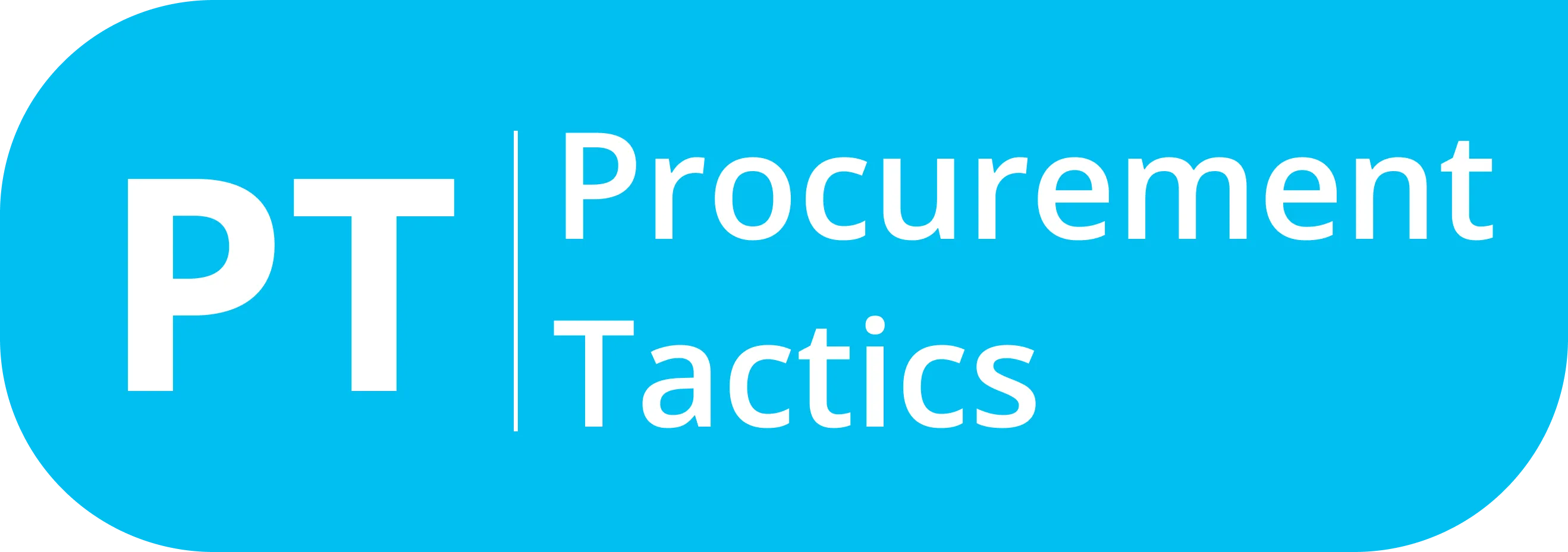Written by Marijn Overvest | Reviewed by Sjoerd Goedhart | Fact Checked by Ruud Emonds | Our editorial policy
AI Predictive Analytics — Uncovering Procurement Insights

As taught in the Artificial Intelligence in Procurement Course / ★★★★★ 4.9 rating
Key takeaways
- AI predictive analytics in procurement is the practice of using AI techniques to study procurement data to find patterns, forecast trends, anticipate outcomes, and other factors.
- To use predictive analytics in procurement, teams must cleanse and prepare data to gain a more accurate final result
- Adapting predictive analytics in procurement can lead to more reliable forecasting, better risk management, and more cost savings.
AI predictive analytics is set to change how companies forecast and anticipate multiple factors such as risks, trends, supplier performance, customer preferences, and more.
Procurement teams turn to analytics to understand anomalies and make decisions supported by data, which helps in areas like supplier selection, sourcing, negotiations, and more.
This article explores the topic of AI-coordinated predictive analytics in procurement, its benefits, its limitations, and what steps procurement professionals should take in adapting predictive solutions.
AI Predictive Analytics in Procurement
AI predictive analytics in procurement is the practice of using AI techniques to study procurement data to find patterns, forecast trends, anticipate outcomes, and other factors.
AI systems can forecast demand using purchasing data to help procurement professionals plan better. Moreover, it can predict supplier performance, forecast pricing changes, and anticipate potential risks in the supply chain; ultimately leading to a more optimized procurement process.
Predictive analytics can lessen supply chain disruptions and other risks in procurement. PwC estimates that by 2030, AI-coordinated predictive analytics could result in more than $500 billion reduction in waste and inventory costs globally.
4 Steps for Using AI Predictive Analytics in Procurement
Before you implement predictive analytics in procurement, let’s explore the steps you need to take to ensure you do it adeptly. Below are the four key steps every procurement professional should take in applying AI predictive analytics.
1. Cleanse the data
For predictive analytics to be reliable, accurate, and consistent, teams must first prepare the data. Data quality is paramount, so it’s important to cleanse data by correcting mistakes, removing duplicates, and editing missing values.
Using AI predictive analytics still requires some manual work in cleansing and preparing data, but doing so sets teams up for deriving more accurate forecasts.
For example, if a market report contains outdated information, even with context, this could confuse the AI and result in a misinformed prediction about trends and demand.
Thus, teams should remove outdated and irrelevant parts of data to ensure AI only studies the latest updates.
2. Find correlations
Many factors influence changes in prices, market dynamics, geopolitical events, and more. In AI predictive analytics, it’s important to find correlations among different factors to create impactful models.
Procurement professionals should look at past data to understand patterns between variables. This gives procurement teams and the predictive analytics model a better standing in predicting outcomes.
For example, a procurement professional could look at the sudden increase in demand for a product and deduce its relation to past factors, such as marketing strategies that could have impacted it.
3. Establish warning systems
Once predictive models are in place, procurement professionals should set up warning systems to alert them of deviations or errors. This applies to prices, supplier performance, inventory levels, and others.
These warning systems help procurement professionals find areas that need improvement or correction, leading to proactiveness in problem-solving.
For example, if prices change unexpectedly compared to the predicted numbers, it could mean a potential supply chain disruption or an opening for an upcoming negotiation.
4. Choose forecast methods
Different forecasting methods include time series, regression, and machine learning. Procurement professionals will end up using a different forecasting method for a different need.
It’s important to choose the right forecasting method to suit different types of data to accurately predict outcomes.
For instance, a procurement team could combine time series analysis with machine learning to predict the demand for a specific type of goods. Time series analysis will look at seasonal trends while machine learning systems look at market dynamics.
Benefits of AI Predictive Analytics in Procurement
Predictive analytics in procurement is set to redefine traditional methods. Below are some of the main benefits of AI predictive analytics in procurement.
Reliable Forecasting
Because AI predictive analytics can study large volumes of data, findings from this data are more reliable and efficient.
But what kind of data can predictive analytics process? The answer is anything from historical procurement data, market trends, supplier performance, and geopolitical events among others.
Predictive algorithms can look at this data and generate more accurate and reliable forecasts for demand, pricing, and supply chain dynamics. Reliable forecasting helps procurement professionals make smarter decisions and avoid imbalances in inventory.
Cost Savings
AI predictive analytics finds opportunities for savings by looking at contracts, market conditions, suppliers, and other factors. From there, it suggests alternative options for suppliers, and negotiation tactics, and generates optimal procurement schedules.
Moreover, procurement professionals are at an advantage with predictive analytics because it can automate several tasks that shift teams’ focus onto value-added activities.
Risk Management
AI predictive analytics can assess supplier risks instantly, which lets procurement professionals address risks more proactively.
Risks in procurement can include supply chain disruptions, supplier bankruptcy, delivery delays, quality concerns, and more. AI algorithms can notify procurement teams if there is cause for concern about supply chains and sourcing.
Companies Who Offer Predictive Analytics Solutions
In procurement, predictive analytics solutions have the potential to boost our sourcing, negotiation, and supply chain processes. Below are five companies that offer AI solutions for predictive analysis.
1. Zycus
Zycus offers predictive analytics solutions for procurement, offering spend visibility, better contract management, and enhanced supplier performance.
As a GenAI-powered S2P platform, Zycus is trusted by companies like Heineken, Delta, and Mondelez International.
2. SAP Ariba
SAP Ariba offers predictive analytics solutions to help procurement teams improve their forecasting. The benefits of SAP Ariba’s solutions include maximized savings in sourcing, lower procurement costs, and improved contract compliance.
3. IBM Watson Supply Chain
IBM Watson Supply Chain uses AI predictive analytics to offer insights into supplier risk management and forecasting demand for products.
IBM Watson’s tool offers predictive analytics to forecast outcomes in sales or potential risks in inventory management.
4. Oracle
Oracle’s platform uses advanced analytics to help organizations earn insights into their procurement. With capabilities in predictive analysis, Oracle equips companies to make data-driven decisions in sourcing, supplier relationship management, and spend analysis.
Oracle Procurement Cloud incorporates predictive analytics features that use past data, metrics, and information on trends to anticipate and forecast demand.
5. JAGGAER
JAGGAER offers prescriptive, predictive, and intelligent analytics under JAGGAER ONE, which is aimed at providing visibility into everything across the supply chain.
JAGGAER’s predictive analytics solutions can provide quick start metrics to measure KPIs first, then create and analyze reports based on your business needs.
Conclusion
Overall, 2024 is set to see even more applications and success stories of AI-powered predictive analytics in procurement. With the rise of AI models across industries, it’s likely that procurement will increase its use of AI for forecasting to aid proactive risk management.
While AI applications always come with limitations, the benefits outweigh them significantly. Multiple statistics from recent years have shown us the sheer impact AI can have on spend analysis, risk management, and navigating global markets.
Frequentlyasked questions
What is AI predictive analytics in procurement?
AI predictive analytics in procurement is the practice of using AI techniques to study procurement data to find patterns, forecast trends, anticipate outcomes, and other factors.
What are the key benefits of AI predictive analytics?
The main benefits of AI predictive analytics in procurement are reliable forecasting, better risk management, and increased cost savings.
How can organizations implement AI predictive analytics in procurement?
To use AI predictive analytics in procurement, teams should cleanse data, find correlations in data, create warning systems, and choose a forecasting method.
About the author
My name is Marijn Overvest, I’m the founder of Procurement Tactics. I have a deep passion for procurement, and I’ve upskilled over 200 procurement teams from all over the world. When I’m not working, I love running and cycling.









